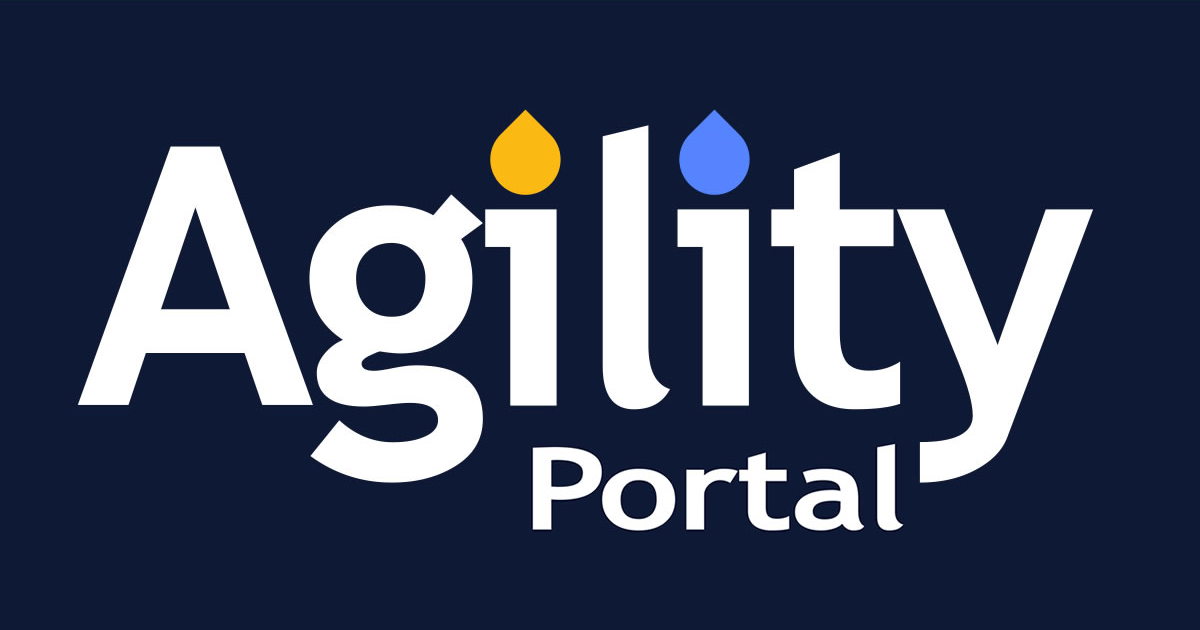Insight Blog
Agility’s perspectives on transforming the employee's experience throughout remote transformation using connected enterprise tools.
20 minutes reading time
(3994 words)
Effective Internal Communication in Retail - The Ultimate Guide for 2024
The cornerstone of any Effective Internal Communication in Retail sector is demonstrating to employees that they are highly appreciated.
The cornerstone of any Effective Internal Communication in Retail sector is demonstrating to employees that they are highly appreciated.
Effective communication is crucial in the hectic world of retail; however, a chasm often opens up when orders from up high are meant to trickle down to the busy shop floors.
Most of the organizations admit that they have trouble communicating with their non-desk staff. Retail employees sometimes depend on more antiquated, verbal pass-throughs for information, while their office-based colleagues have quick access to a myriad of digital updates, whether it is emails or intranet news feeds.
This approach is fraught with danger since orders tend to become garbled as they trickle down the chain of command, much as in the "telephone game" we all played as kids. In the retail industry, these discrepancies are more than just an annoyance; they point to a systemic failure.
We propose a decalogue of novel approaches to improving internal conversation as a means of closing this gap.
In the volatile retail sector, a robust and adaptable network of communication is indispensable, as anything less can spell disaster for a business.Retail communication encompasses various aspects, including:
This guide will delve into the significance of efficient internal communication within the retail industry, offer insights on establishing a resilient communication infrastructure, and showcase successful retailers who have achieved this.
- Company updates and announcements
- Retail Industry news
- Employee Success stories
- New initiatives and campaigns
- Company social events
This guide will delve into the significance of efficient internal communication within the retail industry, offer insights on establishing a resilient communication infrastructure, and showcase successful retailers who have achieved this.
These techniques are designed to improve communication amongst team members so that everyone, regardless of their position or location, is on the same page with regard to the organization's central messages and long-term goals.
Such harmony is essential to the success of any business.
Do you work in the healthcare industry: Internal Communications in Healthcare - The Ultimate Guide and 7 Best Practices for 2023
What is retail communication?
Lets dig in to what is retail communication?
Retail communication involves the flow of information within a retail organization, connecting corporate headquarters to store employees, and encompasses both internal and external channels. It stands as a pivotal element in the triumph of any retail enterprise.
Internal communication revolves around the exchange of information among employees within the organization. This includes updates on company policies, product launches, training initiatives, and feedback from employees. A robust internal communication framework is indispensable for ensuring that all employees are attuned to the company's objectives and equipped with the knowledge needed to perform their roles effectively.
External communication, on the other hand, focuses on disseminating information to customers and other stakeholders.
This entails activities such as advertising, marketing campaigns, delivering product details, and managing customer service interactions.
Effective external communication is fundamental in building brand recognition, sparking customer interest, and driving sales growth.
Understanding Employee Internal Communications in Retail
Effective internal communication is crucial in the retail industry as it directly impacts employee morale, customer service, and overall business success. In retail, where employees are often the face of the brand, ensuring they are well-informed, engaged, and motivated is paramount.
Internal communication in retail involves the flow of information and feedback within the organization, from management to front-line staff and vice versa. It encompasses various channels such as team meetings, digital platforms, email, and more, tailored to the needs of the retail workforce.
In retail, understanding the unique dynamics of employee internal communications is key. Retail workers are often spread across various shifts, locations, and departments, making it imperative to maintain a consistent and coherent flow of information.Managers must find ways to effectively disseminate updates on product knowledge, promotions, sales targets, and operational changes to keep employees aligned with the company's objectives. Additionally, fostering a culture of open communication where employees feel heard and valued is essential for building trust and employee loyalty in the retail sector.
Moreover, retail employees often deal with a diverse customer base, so having well-informed and engaged staff is essential for providing excellent customer service.
Moreover, retail employees often deal with a diverse customer base, so having well-informed and engaged staff is essential for providing excellent customer service.
Retailers can leverage technology and training programs to streamline internal communications, ensuring that employees are equipped with the knowledge and tools they need to excel in their roles. Ultimately, understanding employee internal communications in retail means recognizing that well-informed, motivated, and engaged employees are the linchpin of delivering exceptional customer experiences and driving the success of the business.
Why is Internal Communication so Crucial in 2023?
In the absence of such a system, your team would remain uninformed about any significant changes in rules or regulations that could impact your operations. Additionally, it serves as a means to solicit feedback from your employees and elucidate the brand's long-term vision and strategic priorities.
Furthermore, with the ongoing Great Resignation, fostering transparent communication within the organization has become more critical than ever.A well-crafted internal communication strategy can yield a multitude of benefits for your business:
- Enhance teamwork and productivity: This can be accomplished by instilling a sense of purpose in team members, making them feel that their contributions are part of a larger mission. Strategies to encourage participation, such as providing avenues for team members to share their insights, can lead to a 4.6% boost in effort, according to research by Salesforce.
- Elevate job satisfaction and reduce turnover: When employees are deeply engaged in their roles, they are less inclined to seek opportunities elsewhere. Gallup's research revealed that highly engaged teams are nearly twice as likely to stay together (54%) compared to those with lower levels of engagement (24%).
- Enhance efficiency and expedite issue resolution: Is it more effective for your staff to tackle significant problems individually or as a cohesive unit? Would you prefer they have access to a wide array of tools and knowledgeable colleagues? When your entire team is aligned, problem-solving becomes swifter, and operations are streamlined.
- Safeguard company resources: Inadequate communication can have detrimental effects on profitability. Therefore, improving internal communication can translate into cost savings.
Despite these advantages, 60% of companies lack a long-term internal communication plan. In industries such as retail, where a significant number of employees are not office-bound, having a plan in place may still prove ineffective if it is outdated.
Traditional intranet platforms often prove clunky, outdated, and underutilized, while email communication is increasingly overlooked. In retail institutions with dispersed workforces, these issues are further exacerbated.
Types of internal communications in retail
According to a 2022 study conducted by Ragan Communications, internal communication has gained substantial significance within the retail sector. The study reveals that a noteworthy 93% of retail organizations now recognize the importance of internal communication. This marks a substantial increase from just a few years ago when only 70% of retailers held the same perspective.
Furthermore, the study highlights a significant commitment by retail organizations to internal communication. More than half of retailers (55%) reported having a dedicated internal communications team, while 62% stated they have a formal internal communications strategy in place.
Several compelling factors underpin the heightened emphasis on internal communication within the retail industry. Firstly, retail is an intensely competitive field, necessitating swift and effective communication with employees to maintain a competitive edge.
Secondly, retail organizations are increasingly reliant on technology to enhance operations and customer service, demanding a well-informed and well-trained workforce.
Lastly, there is a growing emphasis on crafting a positive employee experience within retail organizations, wherein internal communication plays a pivotal role.
Effective internal communication within retail plays a pivotal role for several compelling reasons. It serves to:
- Enhance retail staff: By ensuring seamless information flow and alignment among all stakeholders, effective internal communication contributes to elevating the quality and safety of patient care.
- Foster Employee Engagement: When employees feel well-informed and valued, they become more engaged in their roles, resulting in heightened productivity and improved morale.
- Minimize Errors: Effective internal communication, through enhanced collaboration and information sharing, helps mitigate the risk of errors in retail settings.
- Cultivate Trust: Open and honest communication among colleagues and leaders fosters a climate of trust within the organization, ultimately creating a more positive and productive work environment.
Retail organizations can enhance their internal communication by:
- Developing a Communication Strategy: Formulating a well-defined communication strategy that identifies key target audiences, the messages to be conveyed, and the most suitable channels for communication.
- Utilizing a Range of Communication Channels: Employing a diverse array of communication channels ensures that organizations can reach their employees in ways that best suit their preferences.
- Customizing Messages for the Audience: Tailoring messages to address the unique needs and interests of the specific target audience.
- Soliciting Employee Feedback: Regularly seeking feedback from employees regarding communication efforts can provide valuable insights to continually refine and enhance internal communication practices.
By establishing and executing an effective internal communication strategy, retail organizations stand to enhance patient care, boost employee engagement, reduce errors, and fortify trust within the workplace.
Why are effective retail internal communications critical for success?
Retail store communications should be in harmony with a brand's core values, empowering all employees to actively pursue the brand's mission on a daily basis.
When communication is effectively executed, it results in engaged teams that respond promptly, providing customers with a more refined and consistent experience.
Proficient internal communication enables:
- Headquarters to swiftly disseminate directives, training, and feedback to all store locations.
- Employees to confidently prioritize tasks, work independently, receive feedback, and contribute their ideas.
- Customers to enjoy consistent, high-quality service at every store.
- The entire company to enhance its operational agility and respond more swiftly to challenges.
In the retail industry, a brand's strength is ultimately measured by its least successful store. Therefore, ensuring that every employee is well-informed about updates and instructions is of paramount importance.
Role of internal communications in Retail
In 2024, the role of internal communications in retail will continue to play a critical and evolving role in shaping the retail workforce. The retail industry is constantly adapting to changes in technology, patient expectations, and regulatory requirements, and internal communications will be a key driver of these changes.
Here's how internal communications will impact the retail workforce in 2024:
- Real-time Collaboration and Information Sharing: Internal communications tools will enable retailer professionals to communicate and share information in real time. This will improve the coordination of care, as doctors, nurses, and other staff can quickly discuss patient cases and make informed decisions. Telemedicine platforms and secure messaging apps will become commonplace, facilitating virtual consultations and collaboration.
- Remote Work and Flexibility: The COVID-19 pandemic accelerated the adoption of remote work in retail, and this trend will continue in 2024. Internal communications will support remote work by allowing reail professionals to participate in meetings, training sessions, and consultations from anywhere. This will make it easier to balance work and personal life, attract a more diverse workforce, and address workforce shortages in rural areas.
- Employee Engagement and Wellness: Internal communications will be instrumental in promoting employee engagement and well-being. retail organizations will use these channels to disseminate important information about mental health resources, wellness programs, and updates on workplace safety measures. Engaged and healthy employees are more likely to provide high-quality care.
- Training and Education: Continuous learning and professional development will be facilitated through internal communications platforms. Hospitals and retailsystems will provide online courses, webinars, and training materials to keep the workforce up-to-date with the latest medical advancements and regulations.
- Data Security and Compliance: Retail organizations must maintain strict data security and compliance with regulations like HIPAA. Internal communications platforms will need to meet these stringent requirements to ensure the confidentiality of patient information and internal communications.
- Patient Engagement: While the primary focus of internal communications is the workforce, it can also play a role in improving patient engagement. retail professionals can use these platforms to coordinate patient care, communicate test results, and provide information to patients and their families.
- Crisis Communication: In times of crisis, internal communications are crucial. Whether it's a natural disaster, a disease outbreak, or other emergencies, retail organizations will rely on these channels to quickly disseminate information to employees, ensuring their safety and enabling a swift response to the crisis.
- Feedback and Innovation: Internal communications will be a channel for employees to share their ideas and feedback. Retail workers on the front lines often have valuable insights into how to improve processes, technology, and patient care. Listening to and acting on this feedback will be a key driver of innovation in retail.
- Cultural and Diversity Initiatives: As the retail workforce becomes increasingly diverse, internal communications will help foster a culture of inclusivity and diversity. It will be used to promote cultural competency training and share stories that celebrate the diverse backgrounds and experiences of retail professionals.
In 2024, internal communications in retail will be at the forefront of adapting to the changing landscape of the industry. It will enhance collaboration, support a more flexible workforce, promote employee well-being, and ultimately improve patient care.
As technology continues to advance, retail organizations that leverage internal communications effectively will be better equipped to meet the challenges and opportunities of the future.
The effects of poor communication in retail
Weak retail employee communication apps have a significant and costly impact on the industry.
Here are some statistics and insights illustrating the consequences of such weaknesses:
- Decreased Productivity: Productivity takes a hit when employees struggle to access essential information. Research indicates that employees spend, on average, 2.5 hours per day searching for information, which can lead to missed opportunities for customer interactions (Source: McKinsey).
- Unengaged Employees: Poor internal communication can have a detrimental effect on employee engagement. Studies show that disengaged employees are 60% more likely to make errors in their work, which can negatively impact productivity and the customer experience (Source: Gallup).
- Poor Collaboration: Many retail employees report feeling isolated within their organizations due to inadequate communication. In fact, a survey found that 40% of retail workers never meet the majority of their peers within the company, hindering their ability to collaborate effectively (Source: HR Daily Advisor).
- Lack of Agility: Inefficient communication networks within the retail sector result in delayed responses to critical updates and instructions. Delays in implementing changes make it challenging to maintain a consistent, high-quality customer experience across all stores, potentially impacting customer loyalty (Source: Harvard Business Review).
- Poor Workforce Retention: High turnover is a common challenge in the retail industry, and poor communication exacerbates this issue. Studies show that employees who do not feel connected to their company's values are significantly less likely to stay with their employers (Source: National Retail Federation).
- Security and Privacy Risks: The absence of a designated digital communication platform often leads employees to use personal messaging apps, like WhatsApp and Facebook, for work-related discussions. This poses a significant data privacy risk, as sensitive information may be shared through unsecured channels (Source: Cybersecurity and Infrastructure Security Agency).
Follow us and access great exclusive content everyday: Follow us on Google News
Where to start to improve your retail communication strategy
A solid foundation for effective retail communications begins with structured steps and data-driven insights. Here are some strategies, along with relevant statistics, to guide you:
- Platform Assessment: Begin by assessing the current communication platforms in use within your retail organization. This could include email, intranet, fax, and more. According to a survey by Deloitte, 74% of retailers still rely heavily on email for internal communication, highlighting the need for a more comprehensive approach.
- Consolidation: After identifying the existing platforms, focus on streamlining communication by consolidating them into a single retail communication system. Studies have shown that organizations that use a unified communication platform can increase productivity by up to 30% (Source: Aberdeen Group).
- Accessibility: Ensure that the communication tool is easily accessible to all employees. Implementing a Bring Your Own Device (BYOD) policy or providing mobile devices to retail staff can be a strategic move. In fact, 85% of retailers report that mobility solutions have significantly improved their employee efficiency (Source: Zebra Technologies).
- Centralization: Centralizing communication under one dedicated team can enhance consistency and reduce the risk of mixed messages. A centralized approach can lead to a 24% increase in communication efficiency (Source: McKinsey).
- Relevance: To keep employees engaged, it's essential to provide relevant information. Research shows that personalized communication can result in a 20% increase in employee engagement (Source: Gallup). Invest in platforms that enable targeted communication to specific employee groups, tailoring news feeds to display the most pertinent information first.
- Engaging Content: When crafting communications, consider the preferences of store teams. Long blocks of text are less engaging. Integrate elements like emojis, polls, infographics, and videos to create dynamic content. Visual content can increase engagement by 94% (Source: Venngage).
Incorporating these steps and leveraging relevant statistics can significantly enhance your retail communication strategy. It's crucial to adapt to the evolving communication landscape to foster engagement, increase productivity, and ensure that your messages resonate with your retail workforce.
For more info on communication stratey, read our article about: How to Improve Employee Engagement in Retail in 2023
10 Effective internal communication in retail examples
What are the best retail communication examples?
Examples of retail communication strategies include the use of in-store signage, mobile apps for employee updates, and digital newsletters to inform staff about promotions and company news.
For more info, read our article about: Best Apps for Employees: UPDATED 2022 – A Complete Guide
1. Develop a Comprehensive Internal Communications
Strategy Managers in charge of internal communications in retail often fail to make enough preparations.
Store managers play a crucial role in disseminating company-wide updates to retail workers across the globe.
With the right strategy in place, leaders will be able to focus on what's most important, stay true to their strategic objectives, and reach their intended audience via the most effective channels.
However, a plan is only useful if it is implemented; thus, the buy-in and engagement of store management is essential to achieve common goals.
2. Be Selective with Shared Information
The quick speed of retail employment means that managers often dump a ton of information on workers.
Nonetheless, overwhelming personnel with much information might be harmful. In internal communications for retail, it's not about lowering the volume of information but concentrating on the relevancy of the material.
Think carefully about what information your staff members really "need" to know and look for methods to condense it.
Before forwarding any company-wide memo, make sure you've thoroughly reviewed it to weed out any irrelevant or confusing information.
Free ebook: How To Get Your Intranet Off The Ground
3. Establish a Centralized Communication Hub
Communication should be centralized to avoid information distortion. Emails, SMS, and bulletin boards are just some of the ways that large corporations disperse their communications.
However, in most retail situations, access to such tools is very limited for staff.
It's often a good idea to have one person in charge of managing and disseminating information, such as a store manager or supervisor.
4. Utilize a Unified Digital Workspace
Innovations in digital workplaces are increasing team collaboration and facilitating information sharing.
Managers in the retail industry may use these platforms to get the word out to their staff and customers swiftly and easily. An extensive business intranet system is one common means of disseminating internal messages.
By using an intranet, retail companies may ensure that their frontline staff receives clear and consistent communications.
When employees in a retail setting have access to an intranet, they may more easily communicate with one another and share information in real-time as it is acquired from customers.
5. Retail Embraces Mobility
Today's personnel do their duties away from their assigned workstations 70 percent of the time.
It is essential that mobile devices be accounted for in the evolution of communication in order to keep everyone, especially those working in the expansive retail sector, informed.
The great majority of retail workers already own the necessary equipment on them, so there is no reason not to make use of it.
6. Use the Power of Alerts
When mobile devices are included in communication strategies, a wide variety of alert types become accessible.
Some of these alert types include app-specific notifications, push notifications, intranet signals, social platform notifications, and text/media messages. Implement these procedures in a methodical and consistent manner.
7. Uniformity in Messaging
Clarity and consistency are two characteristics that are essential to effective retail communication.
Effective teams consist of individuals who possess strong interpersonal skills and have a clear understanding of the most suitable channels for communicating different sorts of information.
For instance, publishing a weekly newsletter that contains up-to-date news about the local region is one way that information may be effectively distributed while maintaining a continuous communication rhythm.
8. Regular Touchpoints in Communication
Retail workers have an erratic schedule, so it's crucial to update at the right time and in the right cadence.
It's important to coordinate your staff's shifts with their communication schedules. Maybe once a week, first thing in the morning, put out an update so that even those who work overnights know what's going on. Team participation will be maximized if meetings are scheduled to occur during shift changes.
The regularity with which updates may be expected encourages workers to make monitoring their inboxes a habit.
9. Promote Brand Champions Among Staff
Employee encouragement is a great way to improve internal communications and raise brand awareness.
By using a social-sharing app designed for mobile devices, your staff may discuss corporate updates and spread the word to their own networks. Imagine that you hear about a deal that will last for a whole week at a certain store.
If you post this on an internal advocacy platform, your staff can amplify the message, which might attract more customers to your business.
Whether it's during their regular commute or on the weekend, loyal brand advocates will gladly spread the good word.
10. Highlight Staff Achievements
A successful internal communications plan in retail must include regular employee recognition.
They are the public faces of your organization; therefore, it's important that they feel valued and appreciated. No matter how big or little, merchants should constantly celebrate their employees' achievements to create a happy and motivated work environment.
Introducing AgilityPortal
AgilityPortal offers a comprehensive communication platform designed to enhance connectivity and collaboration within your retail organization.
Whether your team is stationed at their desks or spread across diverse retail settings attending to patients, our platform fosters a sense of unity, idea generation, and alignment with your core values.
With AgilityPortal, every member has the opportunity to contribute to a carefully curated news stream, sharing updates, seeking answers to questions, and expressing appreciation for their colleagues.Our platform includes built-in features that promote employee recognition, creating an environment where swift and mutual appreciation thrives. It's as easy as a few screen taps to engage in quick surveys and polls, keeping employees actively involved.
Accessible through a mobile app, AgilityPortal ensures that every member of your workforce can participate, not just those based at desks.
Are you ready to elevate the performance of your retail teams?
Request a personalized demo today to discover how AgilityPortal can empower your organization.
Wrapping up
Planning is essential when developing a retail internal communications strategy.
Simplifying the process is possible with a thorough strategy, targeted audience selection, and appropriate media use.
The need for clear internal communications cannot be overstated, especially for those workers who interact directly with clients on a worldwide scale.
The financial results and reputation of your business will benefit from the efforts of an informed staff that can effectively advocate for the company's interests.
Categories
Blog
(2569)
Business Management
(314)
Employee Engagement
(204)
Digital Transformation
(171)
Intranets
(119)
Growth
(114)
Remote Work
(61)
Sales
(48)
Collaboration
(37)
Culture
(29)
Project management
(29)
Customer Experience
(25)
Knowledge Management
(21)
Leadership
(20)
Comparisons
(5)
Ready to learn more? 👍
One platform to optimize, manage and track all of your teams. Your new digital workplace is a click away. 🚀
Free for 14 days, no credit card required.

















